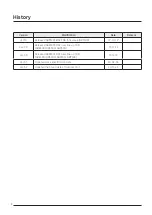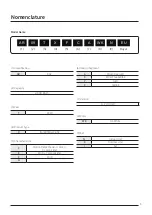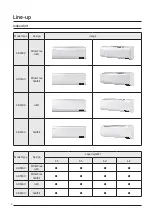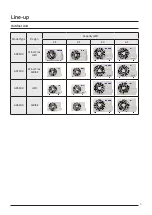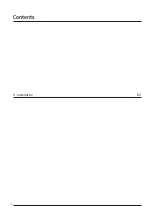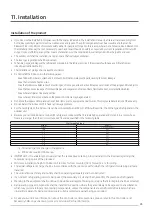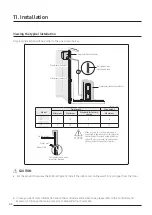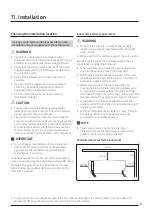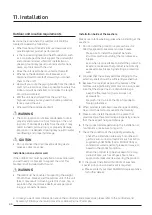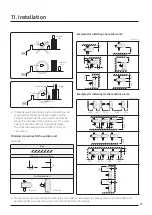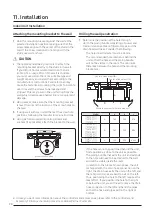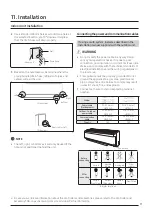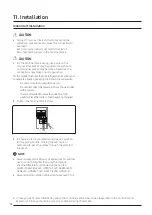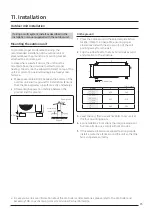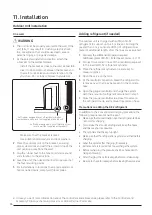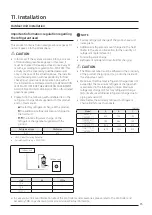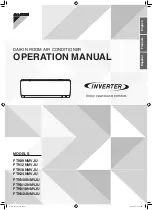
※ In case you want more information about the controllers and accessories, please refer to the Controller and
Accessory TDB on pvi.Samsung.com site or Global Partner Portal site.
11. Installation
94
On a wall
WARNING
•
The unit must be properly secured to the wall. If the
unit falls, it may result in crushing, electric shock,
fire, or explosion that could cause death, severe
personal injury, or property damage.
1
At the selected installation location attach the
L-bracket to the wall as follows:
-
Install the bracket as close to the wall as possible.
-
Insert rubber isolators between the bracket and
the wall to minimize sound and vibration to the
structure. Do not fully compress the isolators.
Soft rubber designed to cut off vibration from
rack to wall (not supplied with product)
Soft rubber designed to cut off residual vibration
from outdoor unit to rack (not supplied with product)
-
Make sure that the bracket is level.
-
Use suitable bolts/washers and lock washers.
2
Place the outdoor unit on the bracket, ensuring
proper clearances and with the arrow on top of the
unit pointing away from the wall.
3
Clip the rubber feet to the tabs to minimize sound
and vibration to the structure.
4
Level the unit, then use anchor bolts to secure it at
the four mounting points.
5
For installations in locations that require seismic or
hurricane tie downs, comply with local codes.
Adding refrigerant (if needed)
The outdoor unit is charged with sufficient R-32
refrigerant to support up to a 5 m line set. For lengths
greater than 5 m, you must add 15 g of refrigerant per
meter of additional length, after the lines are evacuated.
1
Calculate the additional refrigerant required:
Additional grams of R-32 = (Total line set meter − 5) × 15
2
Connect the common hose of the manifold gauge set
to the inverted R-32 refrigerant cylinder.
3
Place the refrigerant cylinder on a scale set to
measure grams.
4
Open the valve on the tank.
5
At the manifold connection, bleed the refrigerant to
remove any air that may be present in the common
hose.
6
Open the gauge manifold and charge the system
with the amount of refrigerant calculated in step 1.
7
Close the gauge manifold valve, close the valve on
the refrigerant tank, and remove the common hose.
Precautions on adding the R-32 refrigerant
In addition to the conventional charging procedure, the
following requirements shall be kept.
•
Make sure that contamination by other refrigerants does
not occur for charging.
•
To minimize the amount of refrigerant, keep the hoses
and lines as short as possible.
•
The cylinders shall be kept upright.
•
Make sure that the refrigeration system is earthed before
charging.
•
Label the system after charging, if necessary.
•
Extreme care is required not to overcharge the system.
•
Before recharging, the pressure shall be checked with
nitrogen blowing.
•
After charging, check for leakage before commissioning.
•
Be sure to check for leakage before leaving the work area.
Outdoor Unit Installation

